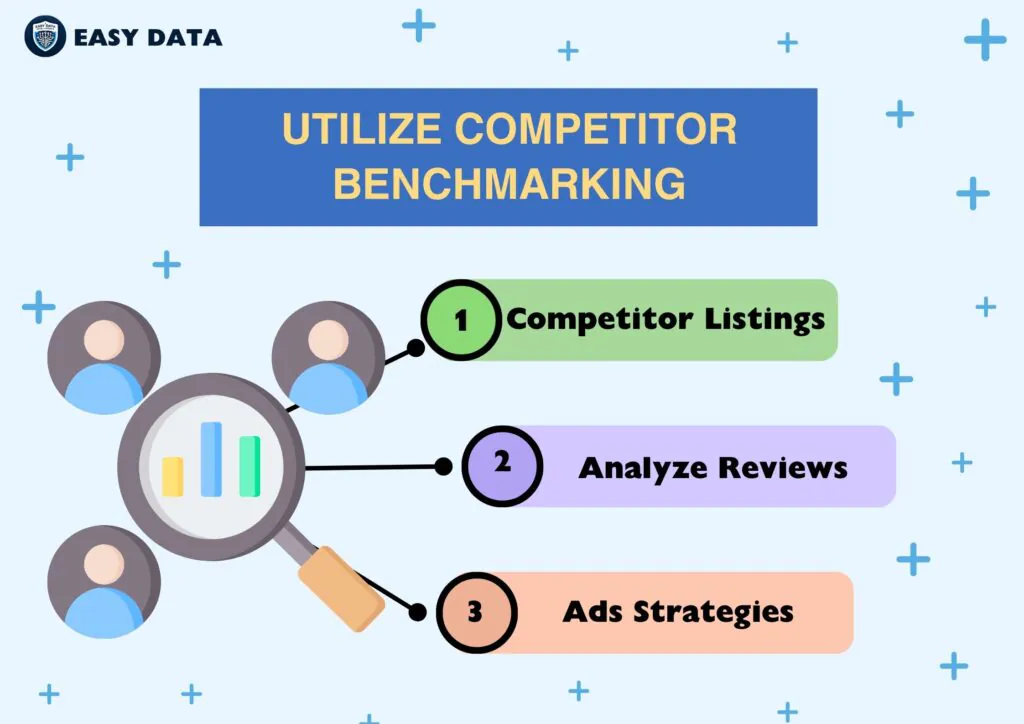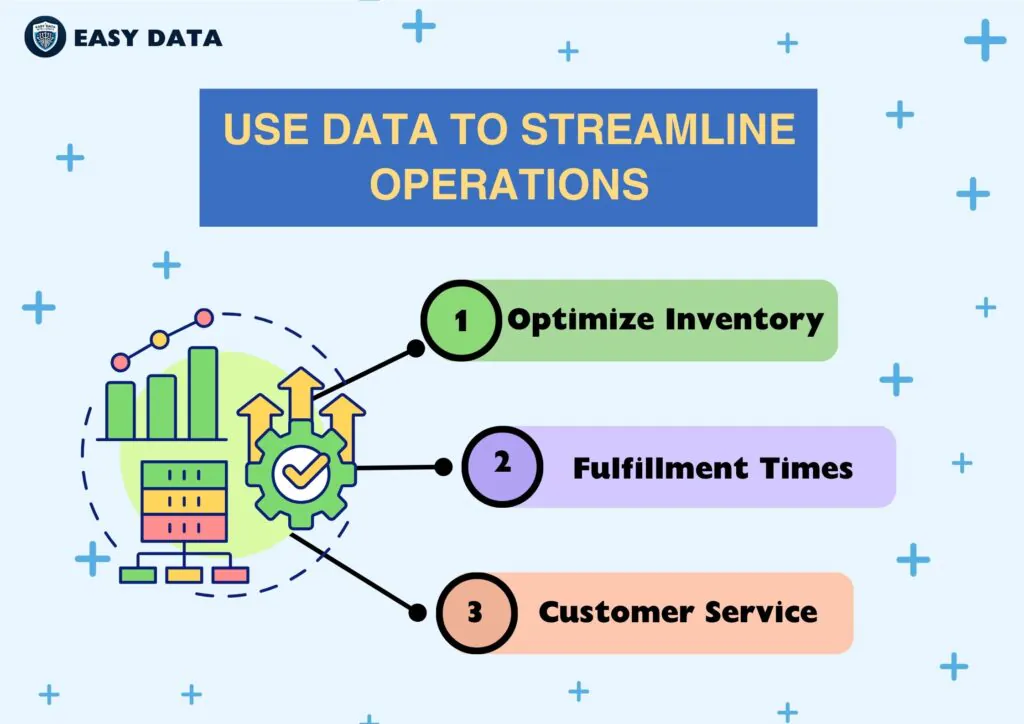Introduction
Shopee, one of Southeast Asia’s leading e-commerce platforms, generates a massive amount of sales data daily. This data provides deep insights into customer behavior, market trends, and product performance, making it a goldmine for sellers. In 2025, as competition intensifies and consumer preferences evolve rapidly, maximizing Shopee sales data becomes not just an option but a necessity.
This article will delve into 10 actionable strategies to help businesses extract value from Shopee data, refine their operations, and boost their sales performance.
- 1. Leverage Advanced Data Analytics Tools
- 2. Optimize Product Listings for SEO
- 3. Segment Your Audience for Targeted Campaigns
- 4. Track and React to Seasonal Trends
- 5. Utilize Competitor Benchmarking
- 6. Personalize the Shopping Experience
- 7. Enhance Ad Performance with Data-Driven Insights
- 8. Improve Customer Feedback Systems
- 9. Build Loyalty with Data-Driven Programs
- 10. Use Data to Streamline Operations
1. Leverage Advanced Data Analytics Tools
Why It Matters
Shopee provides sellers with a wide range of data, but raw data is only useful if it’s analyzed effectively. Advanced analytics tools transform this data into actionable insights, helping sellers identify trends, optimize strategies, and make data-driven decisions.
Detailed Steps
-
Start with Shopee Business Insights:
- Use Shopee’s dashboard to access key metrics like sales performance, customer demographics, and product views.
- Review which products are driving the most revenue and adjust inventory accordingly.
-
Incorporate Third-Party Tools:
- Use platforms like Google Analytics, Power BI, or Tableau to visualize trends and analyze customer behavior beyond Shopee.
- Tools like Dataiku or Looker can integrate Shopee data with other e-commerce metrics for a holistic view.
-
Predictive Analysis with AI:
- Leverage AI to forecast demand, predict inventory needs, and spot emerging trends.
- For example, machine learning algorithms can identify when certain products are likely to sell out, ensuring timely restocking.
Real-Life Example
A fashion retailer using predictive analytics noticed a surge in demand for pastel-colored dresses during the spring season. By analyzing Shopee search trends, they stocked up early and achieved a 30% revenue increase compared to the previous year.
2. Optimize Product Listings for SEO
Why It Matters
Shopee operates like a search engine. If your products aren’t optimized for the platform’s search algorithm, they won’t appear in front of potential buyers. Well-optimized listings not only improve visibility but also increase conversion rates.
Detailed Steps
-
Conduct Keyword Research:
- Use Shopee’s Keyword Ads tool and external platforms like Ahrefs or SEMrush to identify keywords relevant to your products.
- Focus on long-tail keywords that match specific buyer intents, e.g., “ergonomic office chair with lumbar support.”
-
Craft Compelling Titles and Descriptions:
- Write clear, keyword-rich titles that immediately communicate product benefits.
- For descriptions, focus on key features, benefits, and unique selling points. Use bullet points for readability.
-
Use High-Quality Visuals:
- Upload professional images with multiple angles, detailed close-ups, and lifestyle shots.
- Include videos or GIFs demonstrating product usage, as Shopee increasingly supports multimedia content.
-
Accurate Attributes and Tags:
- Fill out all product specifications, including size, color, and material.
- Use relevant tags to improve your product’s chances of appearing in search results.
Real-Life Example
A seller specializing in electronic gadgets updated their listings with detailed specs, clearer images, and optimized titles. This improved their product ranking in Shopee’s search results, leading to a 50% boost in monthly sales.
3. Segment Your Audience for Targeted Campaigns
Why It Matters
Shopee sellers often cater to a wide range of customers. By segmenting your audience, you can deliver personalized marketing campaigns that resonate with specific buyer groups, ultimately improving engagement and conversion rates.
Detailed Steps
-
Use Shopee Data to Segment Customers:
- Segment buyers by demographics (age, gender, location), purchase history, and frequency of purchases.
- Identify high-value customers who spend significantly and create campaigns specifically for them.
-
Create Targeted Promotions:
- Offer exclusive discounts to dormant customers to encourage repeat purchases.
- Design loyalty rewards for top buyers, such as early access to new products or premium discounts.
-
Leverage Retargeting Campaigns:
- Use Shopee Ads to retarget customers who abandoned their carts or browsed products but didn’t make a purchase.
- Personalize ads based on their viewed items or purchase history.
Real-Life Example
An online cosmetics store segmented their audience into new buyers, frequent buyers, and seasonal buyers. By offering exclusive samples to frequent buyers, they increased loyalty and achieved a 20% rise in repeat purchases.
4. Track and React to Seasonal Trends
Why It Matters
E-commerce thrives on seasonal sales events like 11.11, 12.12, and Lunar New Year. Shopee data can help you predict what products will sell well during these periods, ensuring you’re prepared to meet demand.
Detailed Steps
-
Analyze Historical Sales Data:
- Use Shopee’s analytics to identify which products performed best during past seasonal events.
- Check keywords and categories with the highest search volumes during peak seasons.
-
Prepare Stock and Promotions in Advance:
- Ensure sufficient stock of high-demand products to avoid running out during peak sales.
- Plan exclusive seasonal promotions, such as flash sales or bundle deals.
-
Create Marketing Campaigns Around Seasonal Themes:
- Tailor your ads, banners, and product descriptions to match the season’s mood (e.g., gifting for Christmas).
Real-Life Example
A home décor seller noticed that demand for string lights spiked during the festive season. By running a “Festive Home Makeover” campaign, they achieved a 70% increase in sales during December.
5. Utilize Competitor Benchmarking
Why It Matters
Competitor analysis provides insights into what’s working in your industry. By studying your competitors’ strategies, you can identify gaps in the market and improve your own offerings.
Detailed Steps

-
Monitor Competitor Listings:
- Check their product titles, descriptions, and images for inspiration or areas of differentiation.
- Look at pricing trends and promotional tactics.
-
Analyze Reviews:
- Study customer reviews on competitors’ products to uncover unmet needs or common complaints.
- Use this feedback to improve your own products.
-
Track Advertising Strategies:
- Observe which products competitors promote heavily and their ad placement strategies.
- Use tools like Shopee Ads Manager to compare ad performance within your niche.
Real-Life Example
A kitchenware seller found that competitors lacked eco-friendly options. They launched a new line of sustainable utensils, which quickly became a bestseller.
6. Personalize the Shopping Experience
Why It Matters
In the era of personalization, buyers expect tailored experiences. Personalization not only boosts customer satisfaction but also increases conversion rates and loyalty.
Detailed Steps
-
Recommend Products Based on Past Behavior:
- Use Shopee’s algorithm to suggest complementary or frequently bought-together items.
- Display recently viewed items prominently on your shop page.
-
Offer Tailored Discounts:
- Send personalized vouchers to frequent buyers or those with abandoned carts.
-
Custom Communication:
- Use Shopee Chat to engage with customers, answer queries, and provide personalized support.
Real-Life Example
A seller specializing in pet supplies offered personalized discounts on repeat purchases of pet food. This strategy resulted in a 30% increase in customer retention.
7. Enhance Ad Performance with Data-Driven Insights
Why It Matters
Shopee Ads are essential for increasing visibility, but data-driven ad optimization ensures you’re getting the best return on investment.
Detailed Steps
-
Analyze Ad Performance Metrics:
- Regularly monitor click-through rates (CTR), conversion rates, and cost-per-click (CPC).
- Identify underperforming campaigns and reallocate budgets to successful ones.
-
Use Data for Targeting:
- Target ads based on customer demographics and browsing history.
- Schedule ads during peak shopping hours to maximize visibility.
-
Experiment with Ad Formats:
- Test various ad types, such as keyword ads, discovery ads, and product boost campaigns.
Real-Life Example
An electronics seller noticed that discovery ads had a higher CTR than keyword ads for accessories. By shifting their budget, they increased overall ad performance by 40%.
8. Improve Customer Feedback Systems
Why It Matters
Feedback not only helps improve your products but also builds trust with future buyers. Customers rely on reviews and ratings when making purchase decisions.
Detailed Steps
-
Encourage Reviews:
- Send post-purchase reminders to customers asking for reviews.
- Offer small incentives, such as vouchers, for leaving detailed feedback.
-
Respond to Feedback:
- Address negative reviews promptly and professionally.
- Thank customers for positive feedback to show appreciation.
-
Highlight Positive Reviews:
- Use testimonials in product descriptions or marketing materials.
Real-Life Example
A clothing retailer added a size guide based on customer feedback about sizing inconsistencies. This reduced return rates by 15% and improved customer satisfaction.
9. Build Loyalty with Data-Driven Programs
Why It Matters
Loyalty programs encourage repeat purchases and foster long-term customer relationships. Shopee data can help tailor these programs to suit buyer preferences.
Detailed Steps
-
Create Tiered Rewards:
- Offer exclusive perks for frequent buyers, such as free shipping or early access to sales.
-
Analyze Buyer Behavior:
- Use Shopee data to determine the most valuable rewards for your audience.
-
Track Program Performance:
- Monitor redemption rates and customer feedback to refine the program.
Real-Life Example
A gadget store introduced a points-based system where buyers earned points for each purchase. The program increased repeat purchases by 25%.
10. Use Data to Streamline Operations
Why It Matters
Operational inefficiencies can eat into profits. Data can help streamline inventory management, order fulfillment, and customer service.
Detailed Steps

-
Optimize Inventory:
- Track sales trends to ensure optimal stock levels.
- Use demand forecasting to avoid overstocking or understocking.
-
Improve Fulfillment Times:
- Identify bottlenecks in the order fulfillment process.
- Use Shopee logistics insights to choose the best shipping options.
-
Automate Customer Service:
- Use AI chatbots to handle common queries, freeing up time for complex issues.
Real-Life Example
A toy seller used sales trend data to predict peak demand during the holidays, ensuring they were fully stocked. This proactive approach increased holiday sales by 50%.
Conclusion
Maximizing Shopee sales data in 2025 requires a blend of technology, strategy, and customer-centric practices. By leveraging these 10 strategies, sellers can stay ahead of the competition, build lasting customer relationships, and achieve sustainable growth.
Start implementing these insights today, and watch your Shopee sales soar to new heights!
For more data-driven solutions to elevate your e-commerce business, visit our website at easydata.io.vn. Want to see how our services can benefit you? Book a demo here!


Leave a Reply